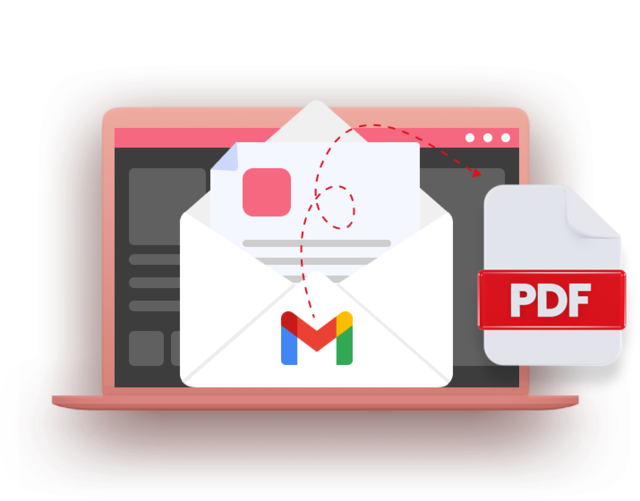Gmail is one of the most frequently used platforms in the digital age. However, organizing and managing emails can be a hassle. The ability to save emails in PDF format is an excellent way to share and preserve important messages.
Why save Emails in PDF format?
Before we move on to the steps to follow, let’s look at the importance of saving emails in PDF. Portable Document format, also known as PDF, is a universal format for files. It’s widely used because of its reliability and compatibility across devices. Converting your emails into PDF creates a digital snapshot that retains the original design and formatting of your email. It’s a great way to preserve important information and make it easy to send out.

How do you save a single email as a PDF within Gmail
1. Open the email: Sign in to your Gmail Account. Click on the email you want to save as PDF.
2. Click on the Print icon and locate the print icon (usually illustrated by a print) in the email window. Click it to open the Print dialog box.
3. Choose “Save as PDF” in the Destination field: Select “Save as PDF” from the list of printers.
4. Adjust Settings (Optional): Before saving, you are able to adjust settings like layout the size of your paper, as well as orientation based on your preferences.
5. Click ‘Save’ and then click the “Save” button to choose the destination location on your computer. Then, save the email as a PDF file.
Your Ultimate Guide to Seamless Conversion
We’ve covered the basic concepts, but let’s explore some other tips to help you get the most out of emailing to pdf within Gmail. For more information, click Save Email to PDF
Organise with Folders Create folders that are dedicated to every category in order to keep a systematic approach. You could create folders to organize emails related to your work, personal correspondence, or specific projects. The storage of emails in PDF format into the folders will make retrieval simple.
Gmail’s batch printing feature lets you choose several emails to print all at once. This time-saving feature is particularly helpful when you want to archive entire conversations or project threads.
Naming Conventions: Develop a consistent naming convention for your PDF files that you have saved. Include details like the sender’s name, subject or date in order to locate particular documents.
Make sure that PDFs are password-protected when they contain sensitive data for extra security. This ensures that only authorized individuals can access the content, adding an extra layer of confidentiality.
Cloud Storage Cloud Storage: Connect your Gmail with cloud storage. So, you can easily save your emails to Google Drive or other platforms as PDFs, which allows access from any location.
The conclusion of the article is:
In the end, the capability to save emails in PDF within Gmail is a valuable skill that enhances the management of your emails and organize capabilities. Converting emails to PDF can be an adaptable solution to archiving important communications, creating the library of references and sharing data with colleagues.
It is essential to understand that mastering the process of the conversion of PDFs will simplify your workflow and increase efficiency. As you explore the vast swathe of your email messages, utilize the power of PDF to preserve as well as share your emails with ease. Make sure to save your emails as PDFs so you can gain new levels of effectiveness for your Gmail account.